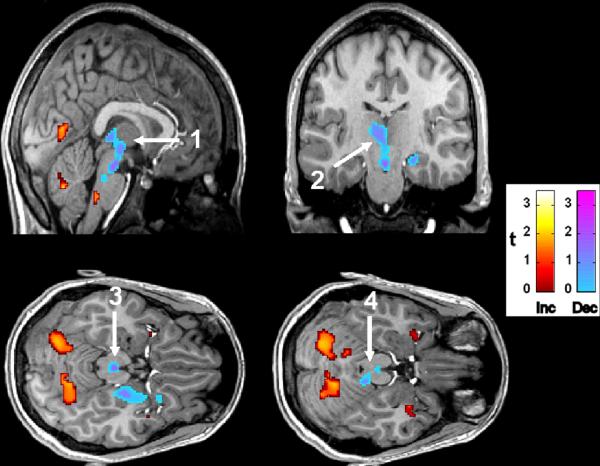Figure 5.
fMRI responses to 5% CO2 in CCHS subjects, compared to age- and gender-matched control adolescents. Signals increase (yellow-red scale), in CCHS subjects (relative to controls), in the dorsal medulla, cerebellum, and amygdala. In the parabrachial pons/locus coeruleus, midbrain and hippocampus, signals decline (blue-green scale). Arrows indicate response differences in the posterior and medial thalamus (1 and 2), medial midbrain (3), and dorsolateral pons (4). The warm colors represent an increase in signal responses in CCHS cases compared to controls, the cool colors represent a greater decline in CCHS over values in controls. Adopted from Harper et al (2005), reproduced with permission.

